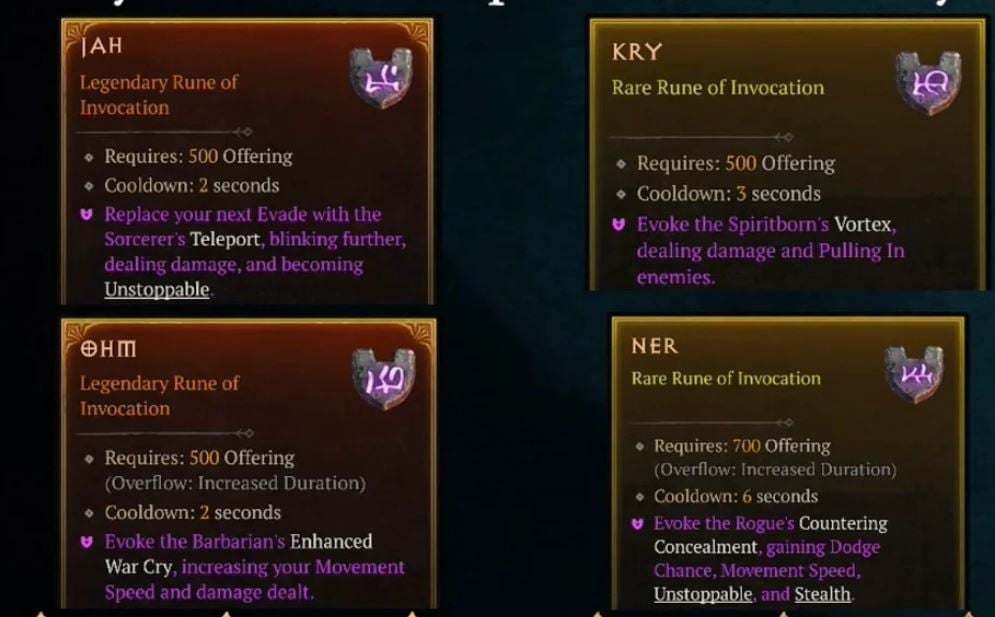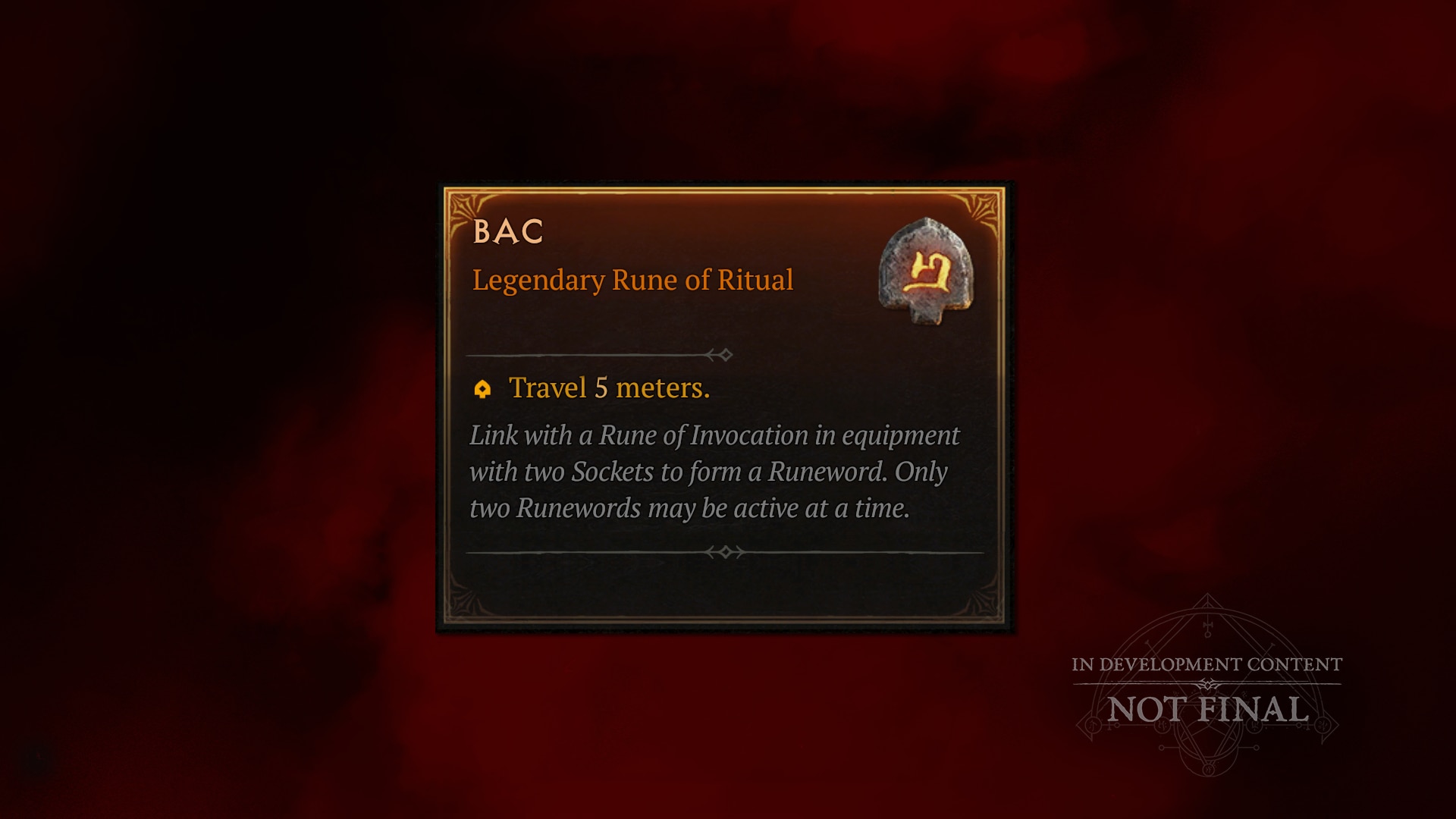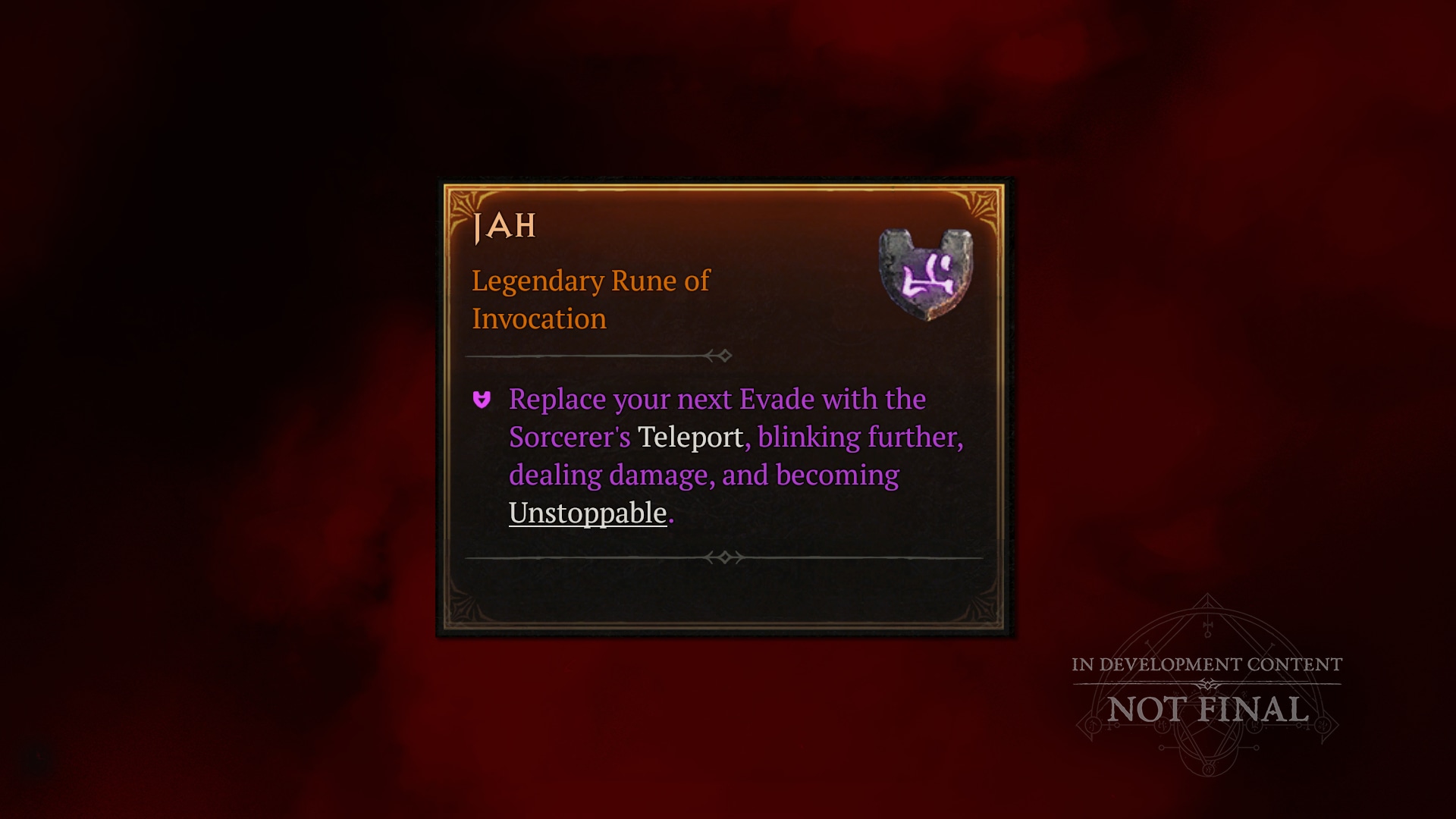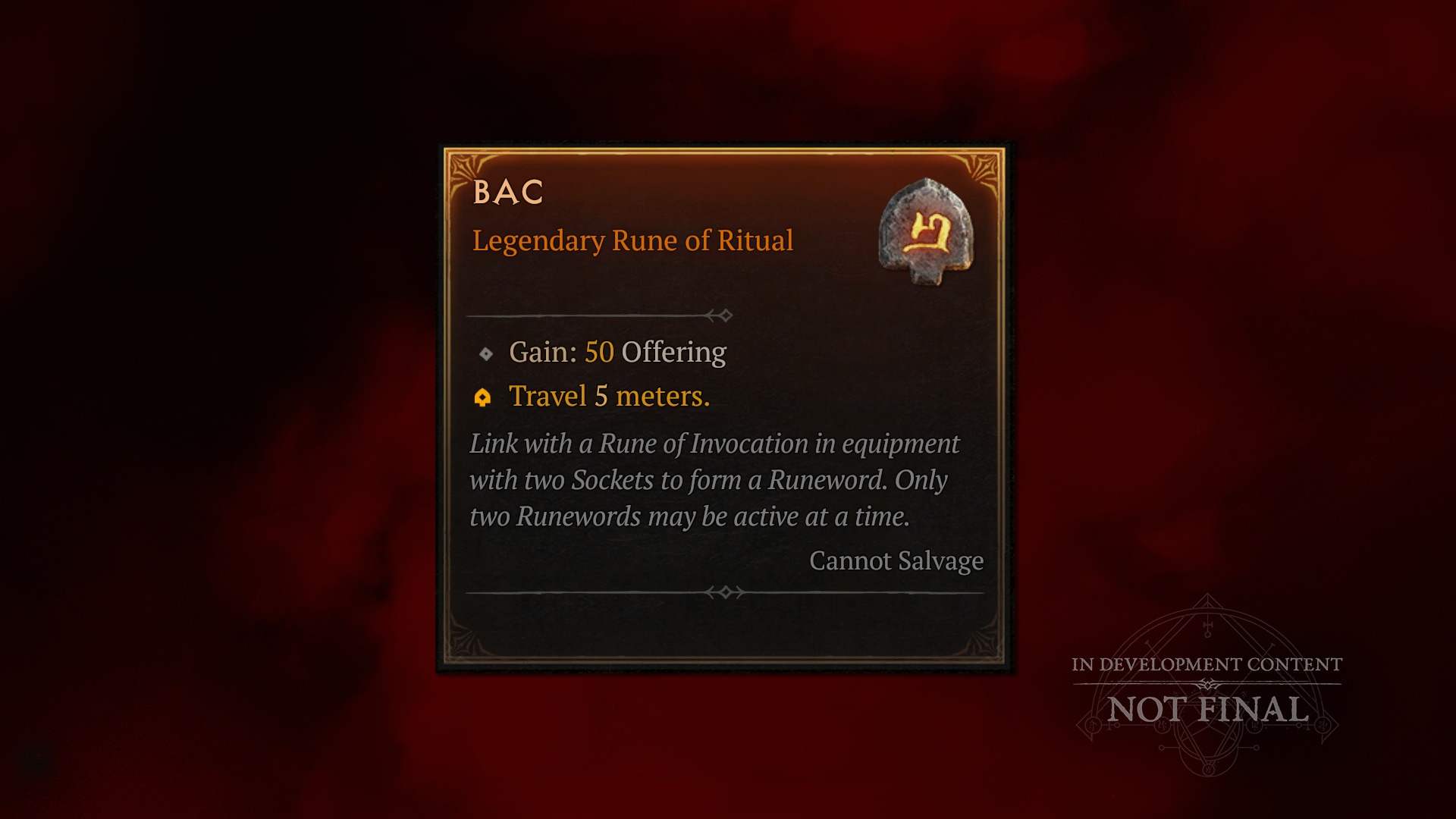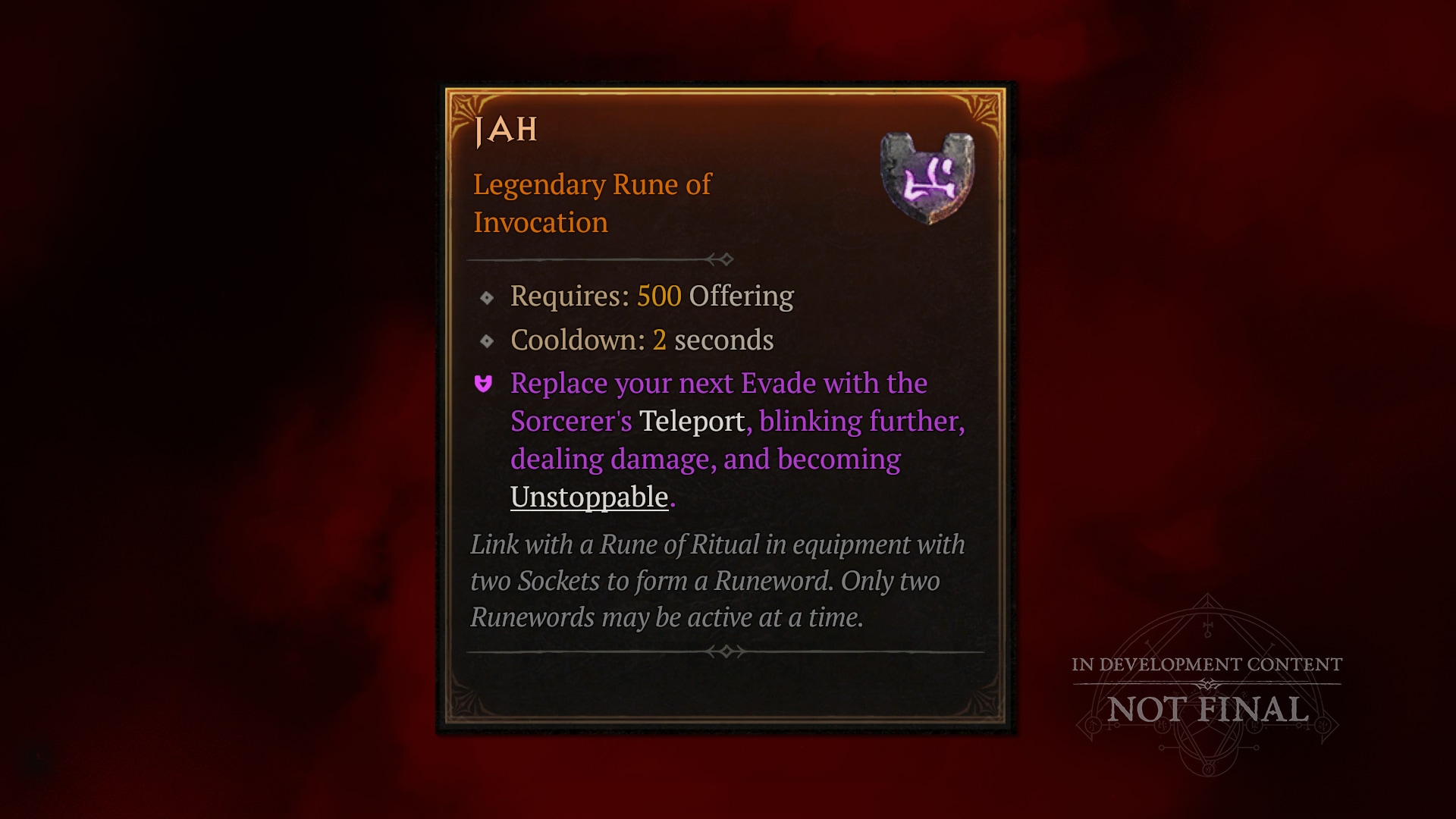One of the biggest announcements coming from today’s Campfire Chat stream for the patch 2.0 PTR is certainly the fact that Runewords are returning!
We will be able to gain access to other classes’ skills with these Runewords. This means some classic stuff like Sorcerer’s Teleport on all classes and similar, very akin to Diablo 2.
You can also check out ALL the currently planned runes over here, and the full PTR 2.0 patch notes here.
What Are Runewords and How Do They Work?
Runewords will allow players to make their own skills/spells and effects! You will need to combine two different types of runes to create a Runeword. Each rune has their own bonus, and you combine when it triggers (Rune of Ritual) with what it does (Rune of Invocation). In the example below you can see a 2-word Runeword, with a trigger and an effect:
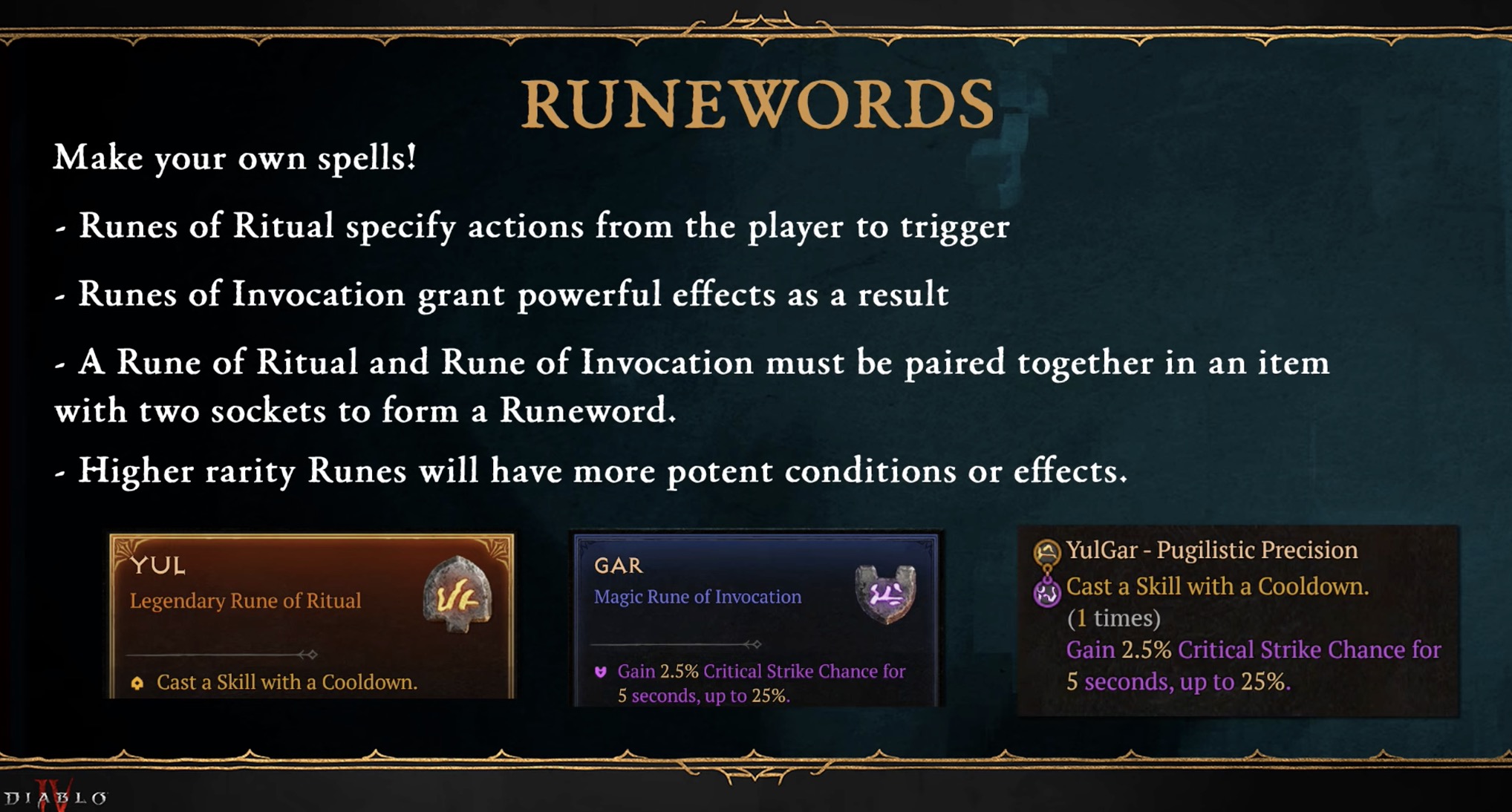
There are 3 rarity levels of runes.
The Rune Resource System: Offering
Activating a Rune won’t be that easy. More powerful effects will need more activations from the Rune of Ritual. This is handled via the Offering resource. A trigger rune aka Rune of Ritual will generate a certain amount of Offering, and then a Rune of Invocation will require a certain amount of Offering to activate its bonus or ability.
If you have more Offering than what a spender Rune requires, it’s called Overflow. Some spender/Invocation Runes have bonus effects based on the amount of Overflow.
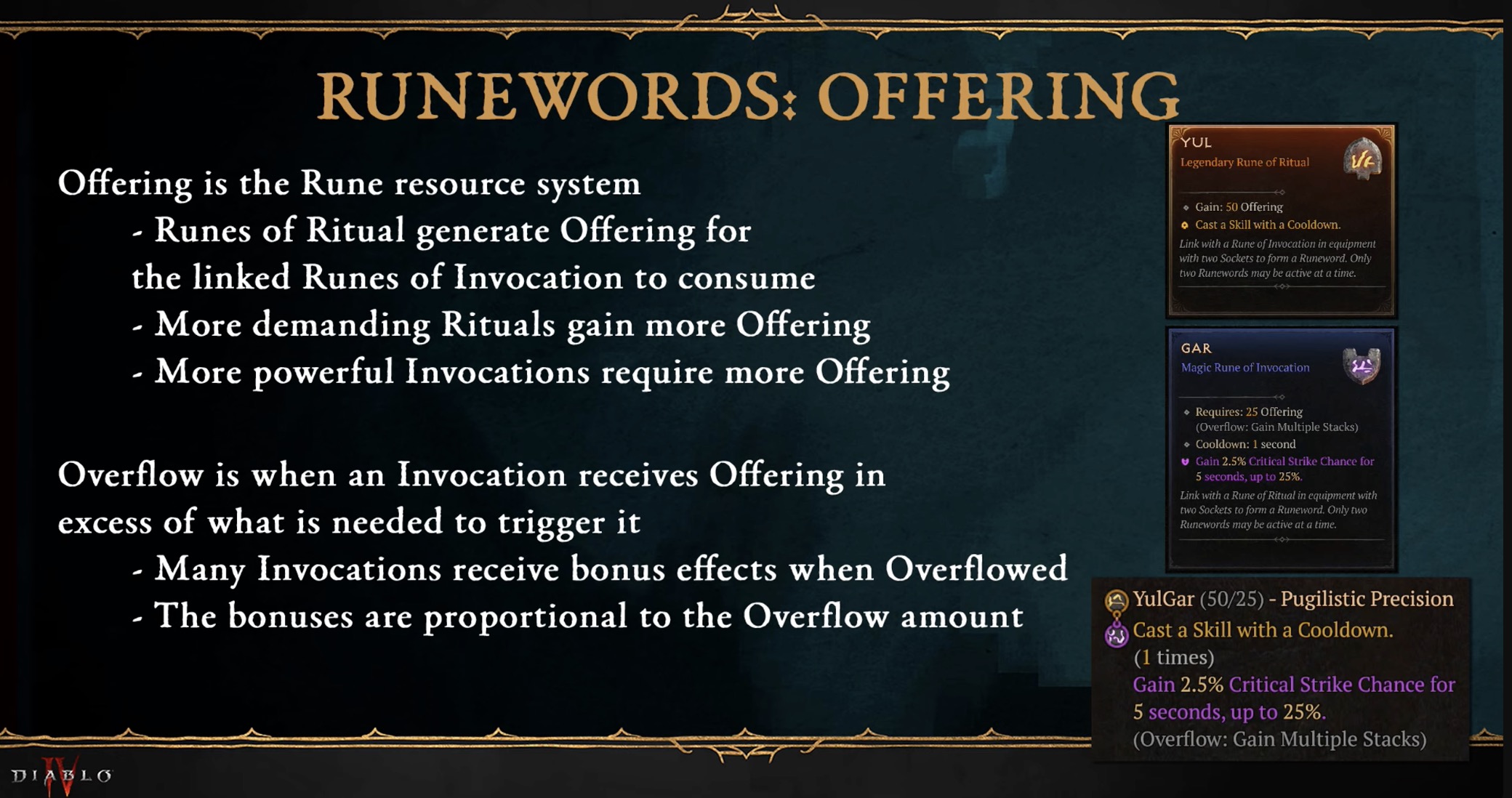
Other Runewords Rules
- You can have a max of 2 Runewords equipped.
- Runes can be socketed into items with 2 sockets and can only be paired with a Rune of the opposite type.
- Chest, pants and 2-handed weapons can have 2 rune slots.
- You cannot equip the same Runeword twice.
- Runes are available for players who own Vessel of Hatred.
- Runes are tradable between players.
- Runes unlock during the Vessel of Hatted campaign.
- Runes will drop throughout the game world as loot from all enemies, but drop at a higher rate in the Undercity, which is a specific activity where you can farm them.
- They stack in the new socketables inventory tab. They are also stackable.
- Each class is sharing 2 skills and 1 aspect to the overall Runeword pool.
- Some Runewords used improved versions of the skill (aka one of the upgrades you get when putting skill points into the skills).
- Runes will scale with gear.
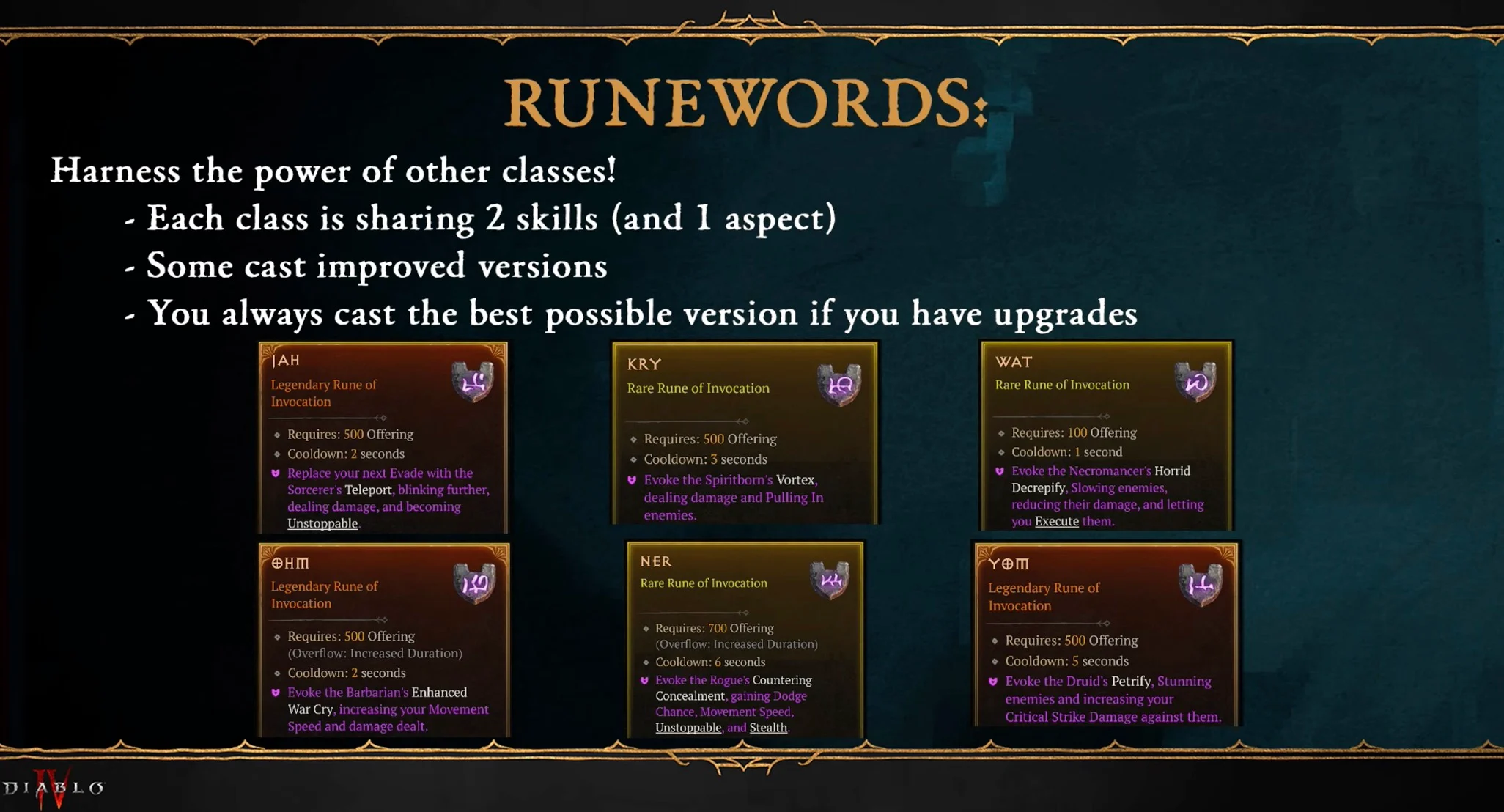
Rune Crafting and Mythic Unique Crafting
You can craft a new Rune using 3 existing ones. It will basically use them to reroll a new one, and it will be different from the three used to create it. Their rarity can also be upgraded when crafting them.
Runes can also be used to create Mythic Uniques! And not only that, you can craft a SPECIFIC Mythic Unique using Runes and Resplendent Sparks!
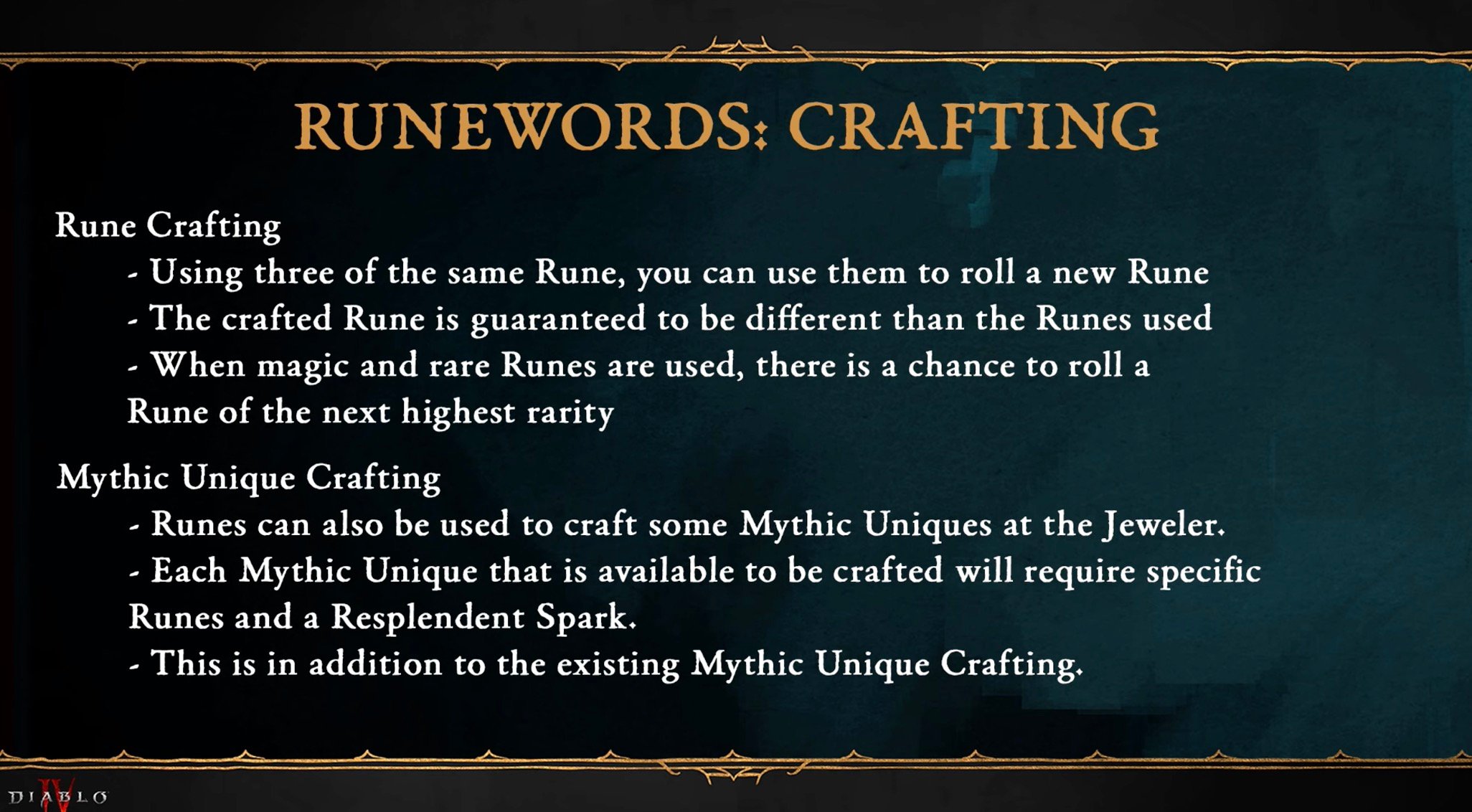
And here’s the official preview as well:
Runewords: A New Source of Power
Outside of the 2.0 PTR, Runewords are a feature that can only be accessed if you have the Vessel of Hatred Expansion.
Runewords are a way to take your character’s power to a new level by creating your own abilities. There are two types of Runes you’ll find in Sanctuary: Ritual and Invocation. Runes of Ritual specify actions you must take to trigger them, and Runes of Invocation grant a powerful effect when you meet said trigger.
Let’s take the Bac Rune of Ritual as an example. Its condition is for your character to move 5 meters.
And then there’s the Jah Rune of Invocation. Its effect is: Replace your next Evade with the Sorcerer’s Teleport (2 sec cooldown).
Runes work off a resource system called Offering, which is generated by Runes of Ritual upon meeting their listed condition. Runes of Invocation consume this Offering to activate their effects. The more demanding of a requirement, the more Offering the Rune of Ritual will generate. On the inverse, the Offering requirement to activate a Rune of Invocation scales with the strength of its effect.
You may generate more Offering than is required to activate your Rune of Invocation. This is where another mechanic, Overflow, comes into play. Many Runes of Invocation apply a bonus to their effects when more Offering than requires is generated, cranking them up a notch briefly.
To make a Runeword, you must socket a Rune of Ritual and a Rune of Invocation into an item containing two Sockets, such as Chest, Leg, and Two-Handed weapon slots. The Helm slot has also received an additional Socket and can now house a Runeword. Any Rune of Ritual is compatible with any Rune of Invocation. Runes come in 3 rarities: Magic, Rare, and Legendary. The higher a Rune’s rarity, the more potent its effect will be.
Here’s an example of how two Runes formed into a Runeword would function:
Let’s use the Bac Rune of Ritual as an example again: While equipped, every 5 meters your character moves will generate 50 Offering.
And we’ll pair it again with the Jah Rune of Invocation, which has an effect of: Replace your next Evade with the Sorcerer’s Teleport (2 sec cooldown). Requires 500 Offering.
Having both the Bac and Jah Runes equipped to an item you’re wearing created the BacJah Runeword. It also means that every time your character travels 5 meters, they will generate 50 Offering. Once they have generated at least 500 Offering, their next Evade is replaced with the Sorcerer’s Teleport.
Runewords can give you access to Skills from other Classes. They can also do things like temporarily increase your Movement Speed, Skills, and more. There are 17 Runes of Ritual and 28 Runes of Invocation available. With a multitude of ways to pair them, the sky’s the limit.
That’s a whole lot, and it’s really getting us excited for the expansion! How about you?
